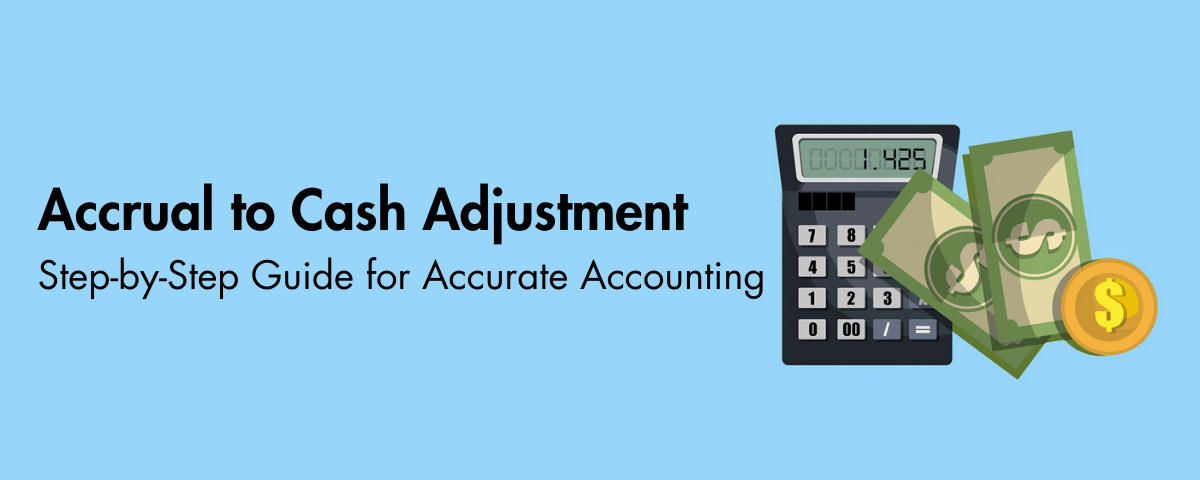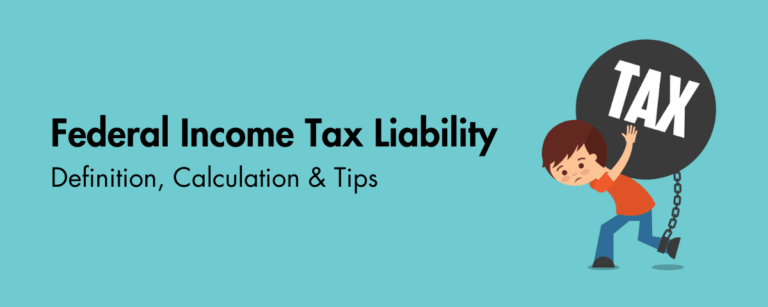Once we walked through a clean accrual to cash adjustment, the fog lifted. Cash basis profit lined up with deposits and disbursements, the bank rec made sense, and she could sign off with a clear head.
If you manage books for clients that file on the cash method, you know this pain. The fix is not magic, it is a repeatable workflow that strips out timing items so revenue equals cash collected and expenses equal cash paid. That is what this guide delivers, in plain language you can use with your team and your clients.
Table of Contents
Key takeaways
- Use the core collections formula: Beginning AR + Accrual Sales − Ending AR = Cash Collections.
- Convert expenses to cash by removing unpaid AP and accrued expenses, then adding prepaid outflows that happened this period.
- Include deferred, unearned revenue only when the cash was received, ignore bad debt write‑offs, and include recoveries only when collected.
- Reconcile results to the bank and document every timing adjustment with a short memo or journal entry description.
- For tax, remember two timing guardrails that often show up in reviews, the 8.5‑month recurring item exception for certain accrual liabilities and the 2.5‑month rule around compensation and short‑term deferrals. (law.cornell.edu)
Accrual vs cash, what changes and why it matters
Under the accrual basis, you record revenue when earned and expenses when incurred. Under the cash basis, you recognize only what you actually received and paid. That simple change in timing reshapes profit by excluding accounts receivable until collected and excluding expenses parked in accounts payable or accrued liabilities until paid.
When you switch from accrual to cash, timing defines profit. You keep earned and incurred for management reporting, then translate it to cash, so tax and liquidity decisions match the money in the bank.
You will also treat prepaid expenses as cash outflows when paid and unearned revenue as inflows when received. The result is a P&L that tracks deposits and disbursements, which is what owners and tax returns care about.
The two formulas you will use on repeat
- Cash collections from customers
- Beginning AR + Accrual Sales − Ending AR = Cash Collections
- Cash payments to vendors
- Start with accrual expenses, then adjust for timing:
- Cash Payments ≈ Accrual Expenses + Beginning Accrued Liabilities − Ending Accrued Liabilities + Beginning AP − Ending AP − Beginning Prepaids + Ending Prepaids
These are approximations that rely on clean opening and closing balances. You will tighten them by checking unusual items, for example, a year‑end AR cleanup, stale AP, or one‑time deposits that do not hit revenue.
2025 compliance note, two timing guardrails you should know
- Recurring item exception, the 8.5‑month rule. Certain recurring accrual liabilities can be treated as incurred in the prior year if all events and amount are fixed by year end, the item is recurring, and economic performance occurs by the earlier of the filing date or the 15th day of the ninth month after year end. This is often relevant for taxes, rebates, and similar items. Document your policy and keep it consistent. (law.cornell.edu)
- Compensation and the 2.5‑month rule. Amounts paid to employees after the 15th day of the third month after year end are presumed deferred compensation. Deductibility for many nonqualified amounts follows payment, not accrual, and short‑term deferral concepts under section 409A also use this 2.5‑month window. Time your year‑end bonus payouts with this in mind, and separate related‑party situations.
For readers handling client work, keep these in your review checklist. They do not change the cash basis mechanics, but they shape cutoff and audit support.
What changes in practice
- Receivables leave revenue until cash is collected.
- Unpaid AP and accrued expenses leave the P&L until paid.
- Prepaid outflows, like rent or insurance, enter expenses when you pay them.
- Customer prepayments sit as unearned revenue on accrual books, then show up as cash basis income in the period you received the money.
- Every total ties back to bank activity, so you always reconcile and then explain any timing differences that come from non‑bank items, for example, merchant fees netted against deposits.
A quick word on customer advances for accrual filers
If you run accrual books and accept prepayments, section 451 rules allow limited deferral of advance payments to the next year when you meet the financial statement or “earned” criteria. For cash basis reporting, that money is income in the period received. Keep both ideas straight so management reporting stays accrual‑friendly while tax stays cash‑honest. (law.cornell.edu)
If you are a firm owner juggling conversions across dozens of clients, Accountably’s back‑office teams can take on repeatable tasks like AR and AP roll‑forwards, bank reconciliations, and documentation, which frees your seniors to review high‑risk timing areas. Keep this in your back pocket for peak season only if you need it.
Accounts to remove and add when converting
Here is the clean way to reclassify activity so your cash basis P&L reflects only money received and paid:
- Revenue side
- Remove ending accounts receivable from revenue.
- Add beginning AR to capture collections of prior period sales.
- Add unearned or deferred revenue when you actually received the cash.
- Ignore bad debt write‑offs because they are non‑cash. Recognize recoveries only when the cash hits the bank.
- Expense side
- Remove ending AP and accrued expenses so only paid amounts remain.
- Add beginning AP and accrued expenses to capture payments of prior period bills.
- Add prepaid cash outflows, like rent or insurance paid this period, because you actually spent the money now.
Practical formulas you can drop into your workbook
- Revenue to cash
- Accrual Sales
- minus Ending AR
- plus Beginning AR
- plus Cash customer prepayments received in the period
- equals Cash Collections
- Expenses to cash
- Accrual Expenses
- minus Ending AP and Ending Accrued Expenses
- plus Beginning AP and Beginning Accrued Expenses
- minus Beginning Prepaids
- plus Ending Prepaids
- equals Cash Payments
Use a separate tab that pulls beginning and ending balances straight from the trial balance. Lock those cells to avoid accidental edits during late‑night close.
Advance payments and unearned revenue, what to remember
Accrual filers can sometimes defer including advance payments in income to the following year when they have an applicable financial statement and track how much was taken into revenue. That is section 451’s AFS deferral method. For cash basis reporting, there is no deferral, the income is recorded when received. Clients often confuse these two worlds, so note both in your memo and keep the evidence, for example, the contract and the deposit detail. (law.cornell.edu)
Quick reference table
| Driver | What you do | Cash basis effect |
| Accounts Receivable | Subtract ending AR, add beginning AR to sales | Revenue becomes cash collected |
| Accounts Payable | Subtract ending AP, add beginning AP to expenses | Expenses become cash paid |
| Accrued Expenses | Subtract ending accruals, add beginning accruals | Removes unpaid accruals from the P&L |
| Prepaid Expenses | Subtract beginning prepaids, add ending prepaids | Adds current cash outflows back to expense |
| Unearned or Deferred Revenue | Add cash received for prepayments | Increases cash basis income now |
| Bad Debts | Ignore write‑offs, include recoveries when received | Keeps P&L tied to cash |
Worked example with numbers
Assume calendar year, accrual sales of 1,200,000 and accrual expenses of 820,000.
- Beginning AR 240,000, Ending AR 300,000
- Beginning AP 110,000, Ending AP 95,000
- Beginning Accrued Expenses 60,000, Ending Accrued Expenses 85,000
- Beginning Prepaids 25,000, Ending Prepaids 40,000
- Deferred Revenue collected this year 50,000
Collections: 240,000 + 1,200,000 − 300,000 = 1,140,000, then add customer prepayments received of 50,000. Cash collections total 1,190,000.
Payments: Start with 820,000, then
- plus Beginning AP 110,000, minus Ending AP 95,000, net +15,000
- plus Beginning Accruals 60,000, minus Ending Accruals 85,000, net −25,000
- minus Beginning Prepaids 25,000, plus Ending Prepaids 40,000, net +15,000
Cash payments, 820,000 + 15,000 − 25,000 + 15,000 = 825,000.
Cash basis profit, 1,190,000 − 825,000 = 365,000.
You will always reconcile this to the bank. Investigate any gaps from non‑operating cash items, for example, owner draws, loan activity, merchant fees netted against deposits, or payroll taxes paid outside AP.
Review points that save headaches later
- Scan AR after year end for large collections tied to prior‑year invoices.
- Tie customer deposits to contracts so you can explain why they are income now on cash basis.
- Review AP and accrual aging for stale or duplicate items. Clear them before you run the conversion.
- Confirm prepaids are real cash outflows in the period and not just journal entries from last year’s adjustments.
Step‑by‑step workflow to perform the conversion
- Start with the accrual trial balance. Freeze beginning and ending balances for AR, AP, accrued expenses, prepaids, and deferred revenue.
- Convert revenue to cash receipts. Begin with sales, add beginning AR, subtract ending AR, and add customer prepayments collected this period.
- Convert expenses to cash payments. Begin with accrual expenses, subtract ending AP and accruals, add beginning AP and accruals, subtract beginning prepaids, and add ending prepaids.
- Reconcile to the bank. Tie collections to deposit activity and payments to disbursements. Explain any differences from financing or owner activity.
- Document each timing adjustment. Add a short memo in the JE description and store supporting schedules.
- Prepare cash basis financials and a summary sheet that shows the bridge from accrual profit to cash basis profit. Keep this with your workpapers.
Bank reconciliation checklist
- Match client merchant deposits, watch for fees that net against revenue and adjust collections accordingly.
- Confirm transfers between accounts are eliminated so cash is not double counted.
- Tie payroll disbursements to the register, and include payroll taxes paid outside AP.
- Confirm loan proceeds, owner draws, and capital contributions are segregated from operating cash.
Documentation that helps in reviews
- A one‑page bridge from accrual to cash with each timing category and the math.
- Screenshots or exports for AR and AP roll‑forwards, aging as of both period ends, and a list of cleared items after year end.
- A short policy note on prepayments and customer advances. If you have accrual books with advance payments, include the section 451 deferral election and evidence from the AFS.
- If you rely on the recurring item exception for tax, keep your method statement and support that economic performance occurred by the 8.5‑month date.
Frequently asked questions
What does “accrual to cash adjustment” mean?
It is the process of removing timing items so your P&L reflects only cash you received and cash you paid. You reverse receivables and unpaid bills, add prepaids that you paid this period, and include customer deposits when the money hit your account. The end result ties back to bank activity.
How do you convert accrual to cash quickly and safely?
Work from a locked trial balance, use the collections and payments formulas, and reconcile to the bank before and after adjustments. Post clear journal entries with short memos, then export a one‑page bridge that shows the math for reviewers and clients.
What is the 2.5‑month rule for accrued expenses and bonuses?
Two separate ideas often get blended. For many compensation arrangements, the presumption is that amounts paid after the 15th day of the third month following year end are deferred compensation, so deduction rules generally follow payment. Short‑term deferral concepts under section 409A also use the same 2.5‑month window. Time your bonus payments accordingly and document related‑party cases.
What is the 8.5‑month recurring item exception?
For certain recurring accrual liabilities, if all events and amount are fixed by year end and economic performance occurs by the earlier of your filing date or the 15th day of the ninth month, you may treat the item as incurred in the prior year. Use it consistently and document the facts. (law.cornell.edu)
How do prepayments and customer deposits work?
On cash basis, you include the income when you receive the deposit. On accrual books, section 451 rules may allow you to defer part of that income to the next year if you meet the AFS or non‑AFS criteria. Keep both views straight in your files so you can defend tax positions and preserve good management reporting. (law.cornell.edu)
Should I reconcile to the bank every time?
Yes. Cash basis financials are only as good as your bank tie‑outs. Reconcile deposits to your collections schedule and disbursements to your payments schedule. Investigate non‑operating cash and clean it out of the P&L.
Where Accountably can help
If you are scaling client work and struggling with cutoff, backlogs, or documentation, Accountably’s offshore staffing and back‑office teams can take on AR and AP roll‑forwards, bank reconciliations, and JE support. That frees your seniors to handle reviews, tax timing questions, and client communication. Use this only when the workload truly demands it.
Conclusion
You just traded the accrual compass for a cash lighthouse, and you did it with clear math, a bank check, and tidy documentation. Strip out timing items, apply the two core formulas, and keep your review checklist close. When revenue equals receipts and expense equals payments, your clients get answers they can act on and you get clean workpapers that hold up under scrutiny.








